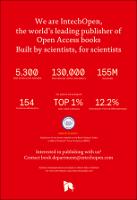Chapter Machine Learning Techniques to Mitigate Nonlinear Phase Noise in Moderate Baud Rate Optical Communication Systems
Author(s)
Bogoni, A.
Ferná, o
ndez, E.
Cá, a
rdenas Soto, A.
Guerrero Gonzalez, N.
Serafino, G.
Ghelfi, P.
Language
EnglishAbstract
Nonlinear phase noise (NLPN) is the most common impairment that degrades the performance of radio-over-fiber networks. The effect of NLPN in the constellation diagram consists of a shape distortion of symbols that increases the symbol error rate due to symbol overlapping when using a conventional demodulation grid. Symbol shape characterization was obtained experimentally at a moderate baud rate (250 MBd) for constellations impaired by phase noise due to a mismatch between the optical carrier and the transmitted radio frequency signal. Machine learning algorithms have become a powerful tool to perform monitoring and to identify and mitigate distortions introduced in both the electrical and optical domains. Clustering-based demodulation assisted with Voronoi contours enables the definition of non-Gaussian boundaries to provide flexible demodulation of 16-QAM and 4+12 PSK modulation formats. Phase-offset and in-phase and quadrature imbalance may be detected on the received constellation and compensated by applying thresholding boundaries obtained from impairment characterization through statistical analysis. Experimental results show increased tolerance to the optical signal-to-noise ratio (OSNR) obtained from clustering methods based on k-means and fuzzy c-means Gustafson-Kessel algorithms. Improvements of 3.2 dB for 16-QAM, and 1.4 dB for 4+12 PSK in the OSNR scale as a function of the bit error rate are obtained without requiring additional compensation algorithms.
Keywords
nonlinear phase noise, clustering, Voronoi, decision boundaryDOI
10.5772/intechopen.88871Publisher
InTechOpenPublisher website
https://www.intechopen.com/Publication date and place
2020Classification
Computing and Information Technology


 Download
Download